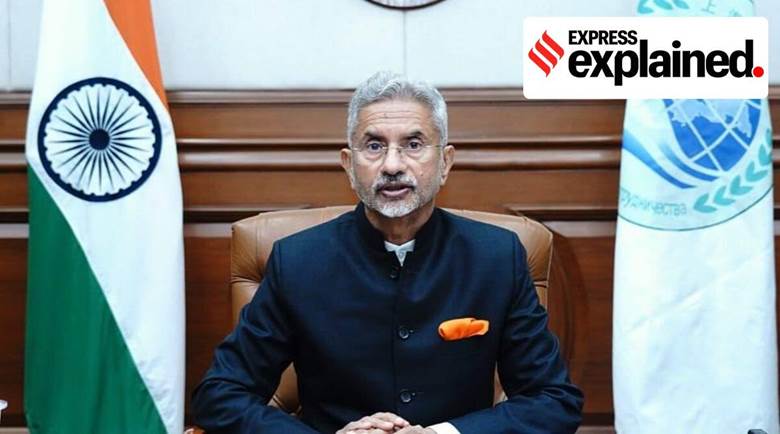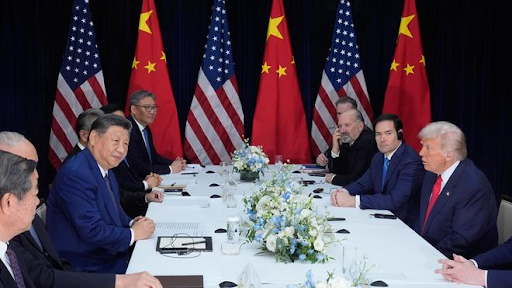Description

Copyright infringement not intended
Context: The 21st Meeting of SCO Council of Heads of Government (CHG) was held on 01 November 2022 in the virtual format. Will unlock the economic potential of this region in which Chabahar port and the International North South Transport Corridor could become enablers. Connectivity projects should respect the sovereignty and territorial integrity of Member States and respect international law. — Dr. S. Jaishankar
Details:
- Jaishankar’s statement is seen as a reference to the Belt and Road Initiative (BRI), a massive multinational, multi-modal connectivity infrastructure project promoted by China. India does not support the BRI, and has declined to join the project.
- A joint communique issued at the end of Tuesday’s meeting said Kazakhstan, Kyrgyz Republic, Pakistan, Russia, Tajikistan, and Uzbekistan reaffirmed their support for China’s BRI and to work jointly to implement the project.
- The major reason India opposes BRI is because it passes through Indian territory that is illegally held by Pakistan.
- The arm of the BRI project that links mainland China to the Arabian Sea runs from Kashgar in China’s Xinjiang Uighur Autonomous Region to Gwadar port in southwestern Baluchistan in Pakistan. The project enters Indian territory occupied by Pakistan in Gilgit Baltistan, and traverses the entire length of Pakistan from north to south before reaching the Arabian Sea.
- This arm of the BRI is called the China-Pakistan Economic Corridor, or CPEC, and consists of multiple modern highway and railway projects.
- It involves the planned rebuilding and upgradation of Pakistan’s National Highway 35 — the Karakoram Highway or China-Pakistan Friendship Highway — that goes from the Khunjerab Pass on the Xinjiang border to Hasan Abdal to the northwest of Islamabad via Gilgit and Mansehra, and the upgradation of the highway that links Gilgit with Skardu to the north of the Line of Control (LoC).
Indian stand:
- On May 13, 2017, the official spokesperson of the Ministry of External Affairs had said: “Regarding the so-called ‘China-Pakistan Economic Corridor’, which is being projected as the flagship project of the BRI/OBOR, the international community is well aware of India’s position. No country can accept a project that ignores its core concerns on sovereignty and territorial integrity.”
- The spokesperson reiterated India’s firm belief that “connectivity initiatives must be based on universally recognised international norms, good governance, rule of law, openness, transparency and equality”, and that “connectivity projects must be pursued in a manner that respects sovereignty and territorial integrity”.
- In October 2021, speaking at the UN Sustainable Transport Conference hosted by Beijing, Priyanka Sohoni, Second Secretary at the Indian Embassy in China, said: “There have been some references to the Belt and Road Initiative or BRI at this conference. Here, I wish to say that as far as China’s BRI is concerned, we are uniquely affected by it. It’s inclusion of the so-called China Pakistan Economic Corridor (CPEC) as a flagship project impinges on India’s sovereignty.”
- As far back as in 1994, India’s Parliament had resolved unanimously that the entire former princely state of Jammuand Kashmir belongs to India, and that India’s position has been clear and consistent in this regard.
- On March 11, 2020, the government told Parliament that India’s “consistent and principled position, as also enunciated in the Parliament resolution adopted unanimously by both Houses on 22 February 1994, is that the entire Union Territories of Jammu & Kashmir and Ladakh have been, are and shall be an integral part of India”.
Shanghai Cooperation Organisation (SCO):

Background:
- In 2013, Chinese President Xi Jinping, during his visits to Kazakhstan and Indonesia, expressed his vision to build a Silk Road Economic Belt (SERB) and a 21st Century Maritime Silk Road (MSR), to break the “bottleneck” in Asian connectivity. Thus, the Belt and Road initiative was born.
- The initiative envisioned a Chinese-led investment of over $1 trillion in partner countries by 2025. More than 60 countries have now joined BRI agreements with China, with infrastructure projects under the initiative being planned or under construction in Asia, Africa, Europe, and Latin America.
- To finance BRI projects, China offers huge loans at commercial interest rates that countries have to pay within a fixed number of years.
- The west has accused China of debt-trapping by extending “predatory loans” that force countries to cede key assets to China. However, research indicates that low and middle-income countries are often the ones to approach China after not being able to secure loans from elsewhere.
- In recent years, the BRI seems to have experienced a slowing down as annual Chinese lending to countries under the initiative slimmed from its peak of $125 billion in 2015 to around $50 to 55 billion in 2021.

Investments in the Indian neighbourhood:
- The biggest project under BRI is in Pakistan, the China Pakistan Economic Corridor (CPEC). Over time, China pledged $62 billion in low-interest loans and financing from Chinese state-owned banks and the Asian Development Bank (ADB).
- Bangladesh, which joined the BRI in 2016, has been promised the second-highest belt and road investment by China in South Asia after Pakistan.
- In Sri Lanka, multiple infrastructure projects that were being financed by China came under the fold of the BRI after it was launched in 2013. The island nation in the last couple of years has witnessed competition between India and China in port terminal and energy projects. In 2021, Colombo ejected India and Japan out of a deal to develop the East Container Terminal at the Colombo port and got China to take up the project. Some BRI projects in Sri Lanka have been described as white elephants — such as the Hambantota port.
- Afghanistan has not comprehensively been brought into the BRI, despite a Memorandum of Understanding (MoU) being signed with China in 2016
- One of the most prominent BRI projects undertaken in the Maldives is the two km long China-Maldives Friendship Bridge — a $200 million four lane bridge.
https://indianexpress.com/article/explained/china-belt-and-road-initiative-india-position-explained-8244276/










